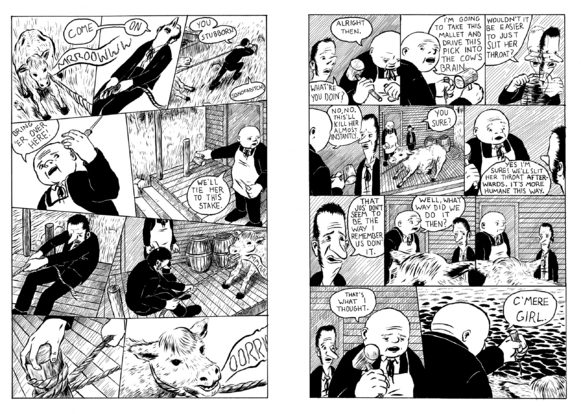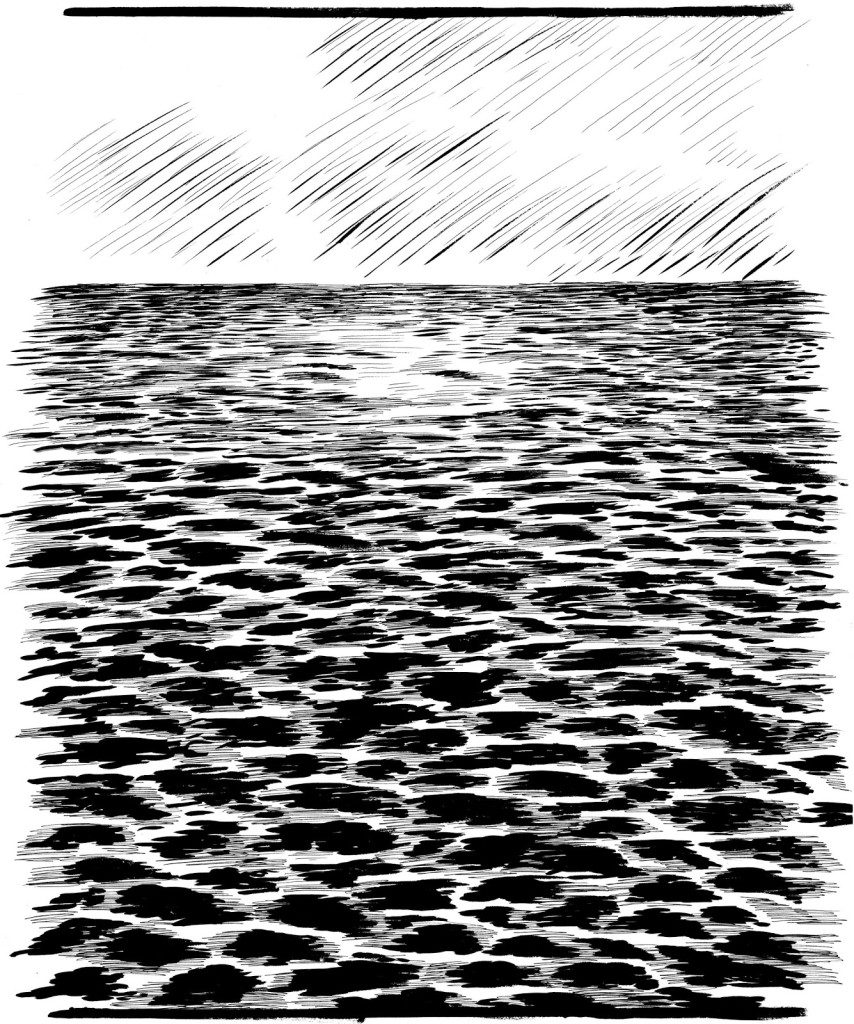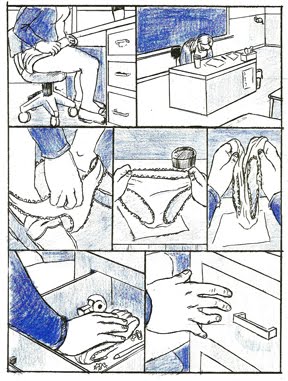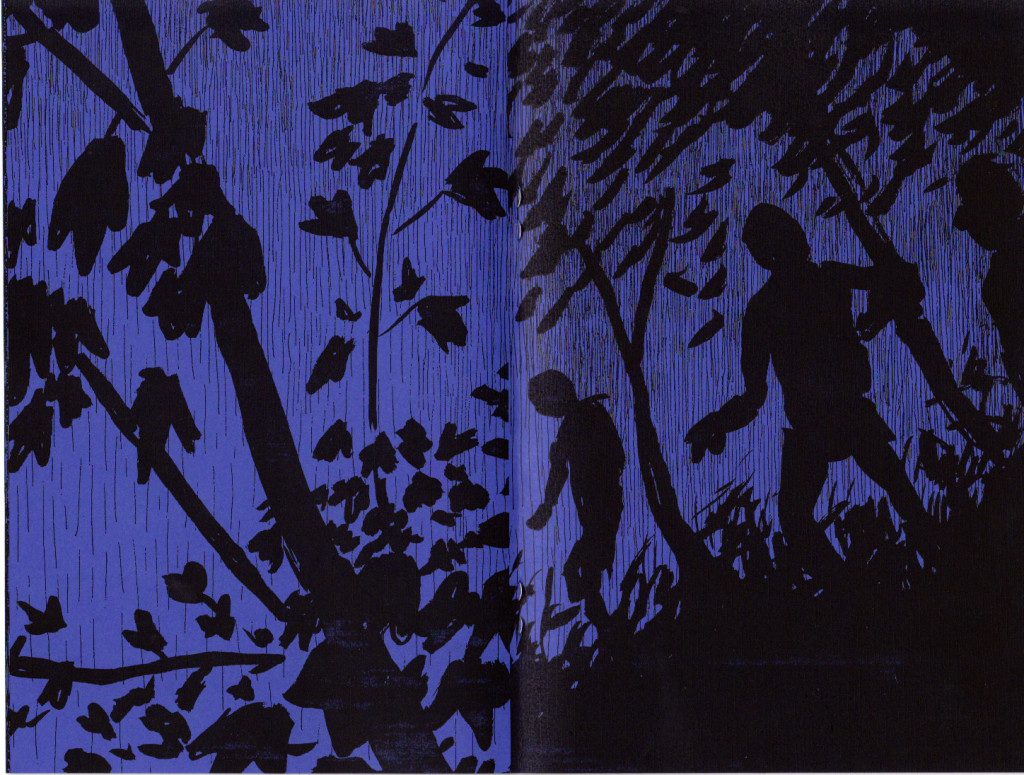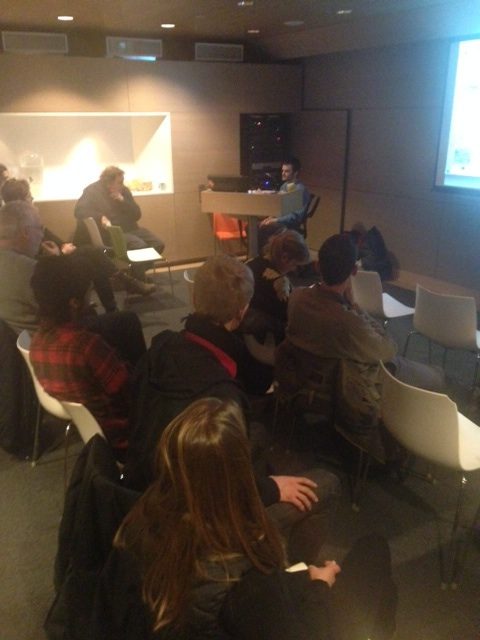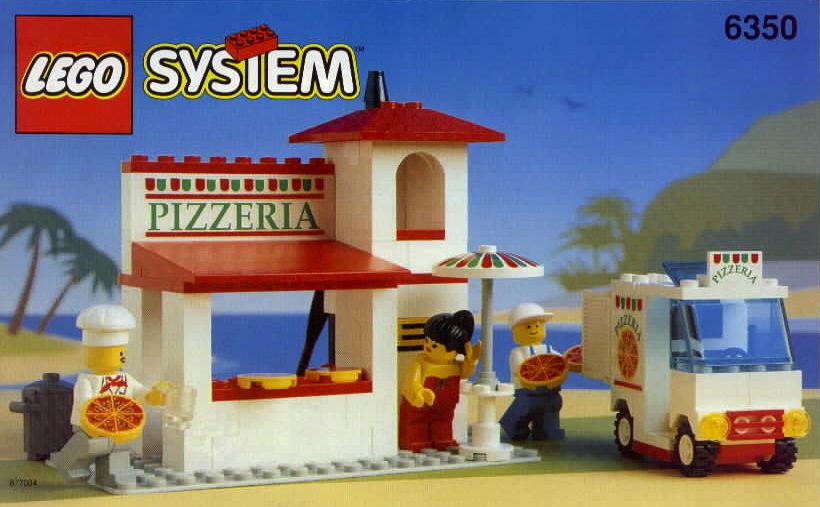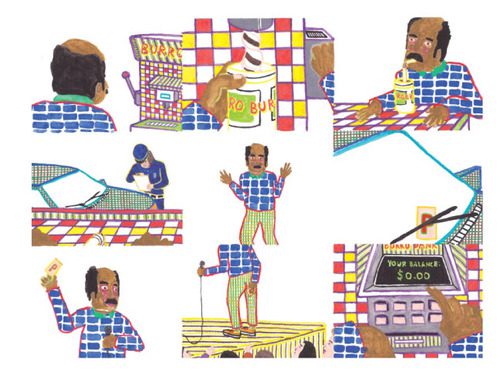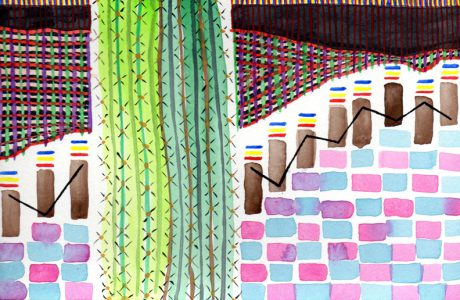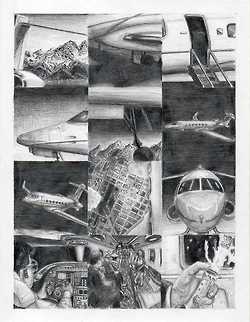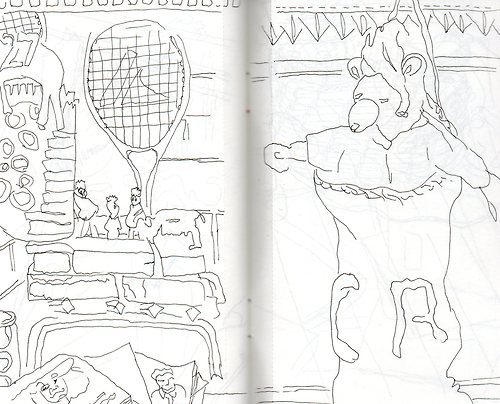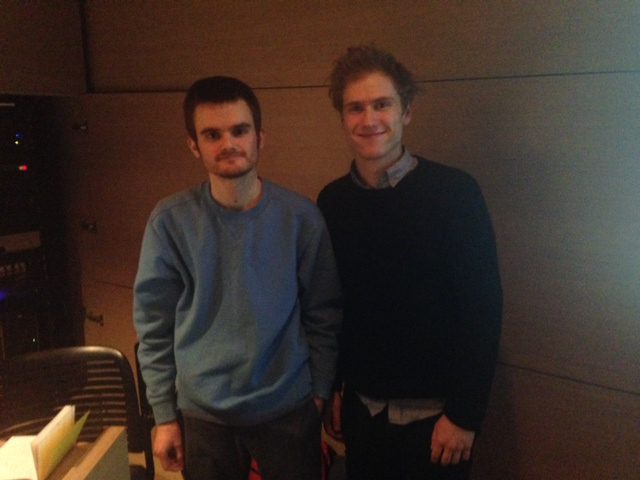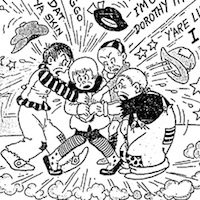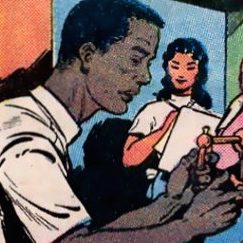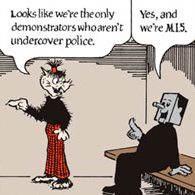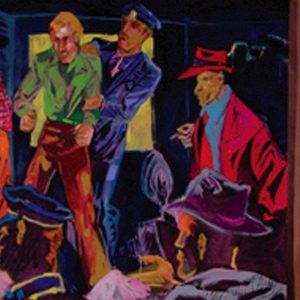The New York Comics & Picture-Story Symposium is a weekly forum for discussing the tradition and future of text/image work. Open to the public, it meets Tuesday nights at 7-9 p.m. EST in New York City. Presentations vary weekly and include everything from historical topics and technical demonstrations to creators presenting their work. Check out upcoming meetings here.
On Tuesday February 11th the 74th New York Comics Symposium featured the artists Conor Stechschulte and Christopher Adams. Both artists are from Baltimore and worked together at the Baltimore Museum of Art.
Conor Stechschulte spoke first describing the work and influences leading up to the creation and publication of his book The Amateurs which he first self-published in 2011 and is being re-realeased by Fantagraphics this Spring.
Stechschulte began by discussing his literary influences, and read aloud this passage from Werner Herzog’s book Conquest of the Useless:
“Two men jumped in after her. In the slaughterhouse one of the Indian butchers cut his own toe by mistake and was bleeding heavily, but because he was wading up to his ankles in slimy blood and guts he did not really notice at first and had to hunt around to figure out where his blood was coming from. He sat down on the stomach of the cow that had just been killed and was still thrashing around and examined his foot. Next to him was a pig that had been pierced in the heart; after a while it got up and walked away. The butchers knock the pigs to the ground, grab a foreleg and pull it up, bracing one foot on the pig, and then they stab their knife with calm accuracy into the heart. Because the pigs scream so hard, a pink piece of lung is often extruded from the wound.”
Out of this visceral passage came the story of two butchers who find themselves in a shop without meat and no memory of how to perform their job.
Stechschulte also cited Kaja Silverman’s Flesh of my Flesh as an important intellectual influence on his comic. Her theory of the Orpheus myth as coming to replace the Oedipus myth as a metaphor for death, the disconnect between people and the inability for men and women to relate to one another is central to the way characters in The Amateurs interact with one another. The horror stories of H.P. Lovecraft and Rainier Marie Rilke were also listed as important influences.
Stechschulte traced his formal development from his early mini-comics up to the work he created for The Amateurs. He started drawing comics when he became involved with a group of friends at Maryland Institute College of Art. They founded the comics collective Close Caption Comics. Early on they would leave stacks of free the comics they made around campus and the thrill of being able to distribute a lot of work fairly easily as one of reasons he became involved with comics. He also credited a community of like-minded individuals and the power of collective resources (his first mini-comics were printing on a rented Risograph machine that the entire collective funded) as essential to his development as a comic artist and the creation of his other self-published works, such as The Dormitory, Water Phase, Lurking/Nocturnes, and The Spirit World.
Stechschulte went on to describe his fascination with the atmosphere of horror in the absence of the actual acts of horror. In his work he wanted to evoke the horror of the unknown, to show without explicitly showing. This is apparent in the tone and content of The Amateurs. It is a dark, violent, and twisted story. However Stechshulte pointed out that while the book is a criticism of human nature it ends on a hopeful note, one that implies that change and connection is possible.
When asked about the economic feasibility of self-publishing vs. the value of being published by an established publishing house like Fantagraphics, Stechschulte said that financially it might not make a difference but he is glad to have the support and resources of a company like Fantagraphics behind his book. He makes comics to make comics and will continue to do so even if it is not a lucrative endeavor.
Christopher Adams spoke next. He began by blithely pointing out that a decade ago, almost to the day, he had dropped out of Pratt. Since then he has published three comics with 2D Cloud, Strong Eye Contact, Period, and Yule Log.
Adams also cited several non-comics influences, including many from early childhood, including Legos, airplane safety instruction manuals, and baseball.
His chief fascination is things that have very strict structures (such as grids or specific instructions like a Lego manual) but upon which, one can impose an infinitude of variations. The fluid superimposed upon the rigid.
He sees this pattern, this tension in the art he loves from Paul Klee to Hokusai’s Mt. Fuji prints and from David Hockney to William Blake’s mono-type books. Comics appeal to him on this level but he elicits this tension in his painting and drawing as well. John Wesley and the sculptures of Anne Truitt and Franz West have also been sources of inspiration.
Adams also shared some of the books that have fascinated and inspired him. The list included Italo Calvino’s Invisible Cities, the Tao Te Ching, the Egyptian Book of the Dead, Ludwig Wittgenstein’s Tractatus Logico-Philosophicus, and the poetry of Emily Dickinson. They are all brief, almost genre-less and seem to follow a strict and underlying coda, which again can be used to explore vagaries, whether through lists, poetry, short stories or philosophy.
Adams continued his talk by tracing the development of his own craft. He began painting again in 2004, creating collage like paintings from old family photographs. When he got a job at the BMA he, like Stechschulte, incorporated drawing into their day jobs, and Adams created a series of comic-like drawings in pen on 3×5” index cards. He submitted his first official comics to a contest in the Baltimore City Paper. He won third place and $50.00. Since then Adams has gone back and forth between creating comics and painting. Each comic and series of paintings is a chance to explore another formal element that engrosses him. The grid is almost always present, but in Strong Eye Contact he eliminated panel borders, letting the readers eye fill them in where the pictures cut off. When creating Strong Eye Contact Adams found he was uninterested in text, therefore there is almost none, but in Yule Log he re-incorporates the use of text, placing all dialogue in strips that cut through the imagery, creating a jarring reading experience. The aggresive and violent tone and content of Yule Log is in stark contrast to the soft black and white pencil Adams used to draw the book.
Adams concluded his talk by discussing his recent experimental line drawings which he makes in small notebooks. Like the index cards, he wanted to create “portable art” and the results have led new paintings and a new chapter of formal experimentation.
Image List:
Image 1: Selection from The Amateurs, 2011, Conor Stechschulte
Image 2: Selection from Water Phase, 2012, Conor Stechschulte
Image 3: Selection from Fountain, 2010, Conor Stechschulte
Image 4: Selection from Lurking/Nocturnes, 2012, Conor Stechschulte
Image 5: Christopher Adams speaking, February 11th 2014, Parsons, The New Shchool, New York.
Image 6: Photo of Lego box set, 6350, Pizza To Go, 1994.
Image 7: Selection from Strong Eye Contact, 2013, Christopher Adams
Image 8: Painting from Strong Eye Contact, 2013, Christopher Adams
Image 9: Selection from Yule Log, 2013, Christopher Adams
Image 10: Drawings, 2013, Christopher Adams
Image 11: Christopher Adams and Conor Stechschulte, Parsons, New York City, 2014
*********
About the author: Sophia Wiedeman is a comic artist and author of The Lettuce Girl series of comics as well as the Xeric wining graphic novel The Deformitory. She lives and draws in New York city. You can see her work here.

